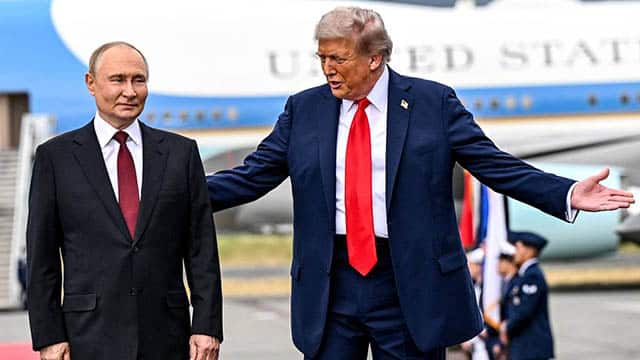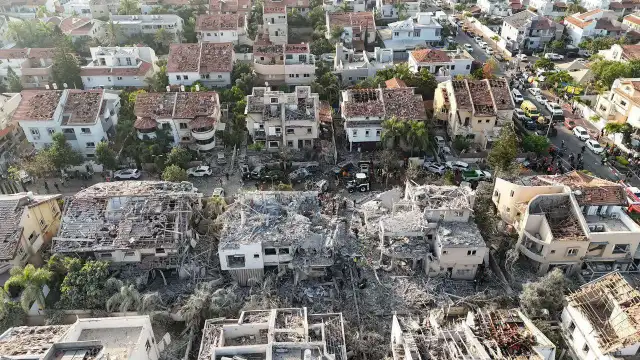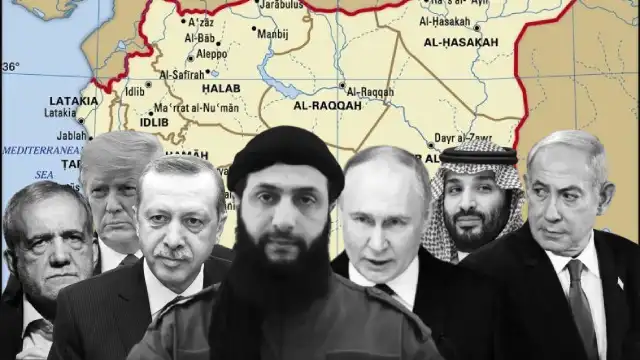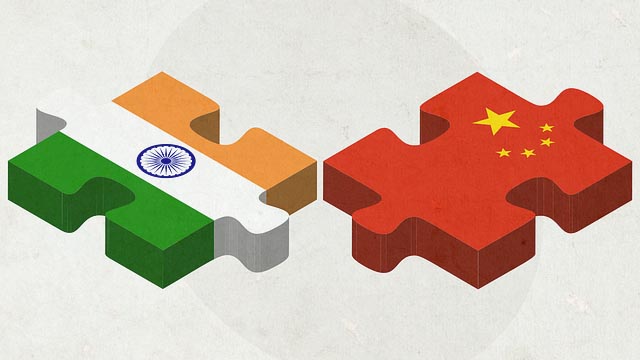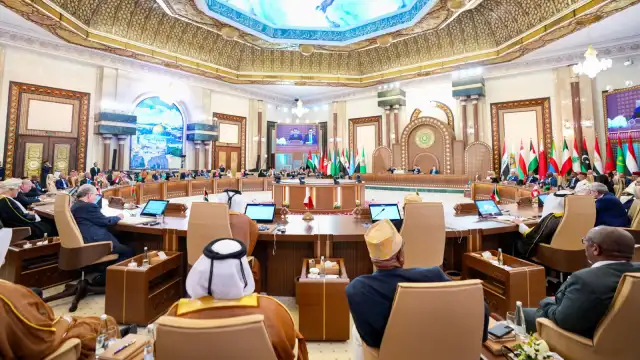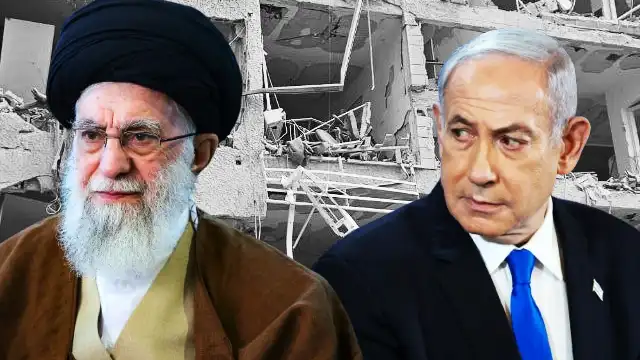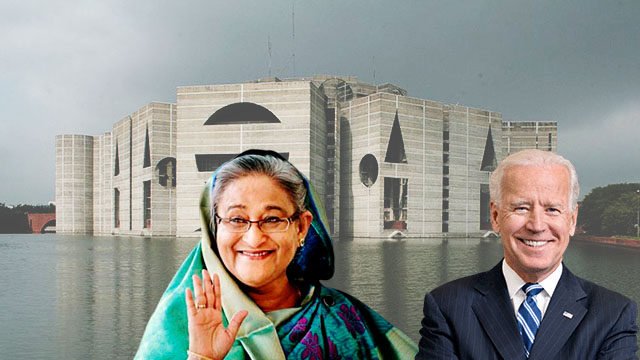Following his formal meeting with US President Donald Trump during the Alaska Summit, named “Pursuing Peace”, Russian President Vladimir Putin appeared happier than his American counterpart for several reasons. What appears from the outcome of the Alaska “Pursuing Peace” summit is that Russia has emerged victorious not only on the Ukrainian battlefield, but also in the diplomatic arena, where the Americans had attempted to bury it.
After the brouhaha over the meeting, when both leaders appeared for the 12-minute press conference, where American and Russian journalists were waiting eagerly to know the outcome of the Alaska “Pursuing Peace” summit, Mr Putin and Mr Trump disappointed them.
Neither president took any questions from the reporters and left soon. The only indication was that the talks were positive, but they were inconclusive, especially regarding a ceasefire in Ukraine.
“There’s no deal until there’s a deal,” Mr Trump said. “We didn’t get there, but we have a very good chance of getting there,” he added.
Indicating that there is a possibility of a round two of the Alaska “Pursuing Peace” summit, Mr Trump told Mr Putin that he expects to see him soon. “We’ll probably see you again very soon,” the US president told Mr Putin, to which the latter replied, “Next time in Moscow”.
Now, questions have arisen over the real outcome of the Alaska “Pursuing Peace” summit, around which a lot of hullabaloo was stoked by the US president, who has been on a “peace deal spree” over the last few months, apparently as part of his bid for the Nobel Peace Prize.
What did the Alaska “Pursuing Peace” summit achieve? Who has got what? And what does this peace summit hold for Ukraine’s future?
Alaska “Pursuing Peace” summit: Russia-US diplomatic endeavour
Rather than negotiating a Ukraine ceasefire, as Mr Trump has emphasised, the Alaska “Pursuing Peace” summit has ended up breaking the diplomatic ice between Russia and the US, whose relations soured under former president Joe Biden.
While Mr Putin told the reporters that Ukraine remained the main topic, he didn’t say they limited their conversations to the Ukraine outcome only.
According to Deputy Chairman of the Russian Security Council Dmitry Medvedev, Mr Trump has refused to increase pressure on Russia over Ukraine. It’s a serious setback for Brussels, as the European Union’s neo-liberal leaders were urging the US president to continue increasing pressure on Moscow.
According to Mr Medvedev, a former Russian president who recently provoked Mr Trump through his social media comments to send nuclear submarines near Russia, a mechanism has been established for high-level meetings between the Russian and US administrations, which remained absent for years.
“1. A full-fledged mechanism for high-level meetings between Russia and the US has been restored. It is peaceful, free of ultimatums or threats. 2. The Russian president presented our conditions for ending the conflict in Ukraine to the US leader in person and in detail. 3. Following nearly three hours of talks, the White House host has refused to escalate pressure on Russia. At least for now,” Mr Medvedev listed the outcomes of the Alaska “Pursuing Peace” summit between Mr Putin and Mr Trump in a post on Telegram.
Although Mr Medvedev wasn’t part of the Russian delegation, which consisted of Kremlin aide Yury Ushakov and Foreign Minister Sergey Lavrov, his notes indicate that the emphasis has been to resolve the diplomatic impasse created by Mr Trump’s predecessor.
At the press conference, Mr Putin also blamed the Biden administration for the deteriorated diplomatic relations with the US. This perked up a gloomy Mr Trump, who had earlier claimed during his presidential campaign that the war wouldn’t have happened if he were in office. Mr Trump nodded as Mr Putin blamed the neo-liberal Biden administration.
This highlighted that the US administration is attempting to rebuild bridges with the Russians, irrespective of its European allies’ reservations.
Moreover, during the Alaska “Pursuing Peace” summit, the Russian leader also brought the issue of the stalled Russia-US summits that Mr Biden had cancelled since 2021.
“As you know, Russia and the US have not held summits for over four years, which is a long time. That wasn’t an easy period in bilateral relations, which, let’s face it, fell to their lowest since the Cold War, which benefits neither our countries nor the world in general,” Mr Putin said while addressing the press.
It appears that by rebuilding their diplomatic relations, Mr Putin also plans to restart business discussions.
Economic gains in focus
For years, especially during the Biden years, the US and the Western mainstream press have been claiming that the Russian economy has been in tatters and Mr Putin faces a massive public discontent at home due to the Ukraine war.
However, the data shows that while the Russian economy contracted by -1.4% in 2022, after facing sanctions from the West, it grew in 2023 and 2024 by 4.1% and 4.3%, respectively, riding on state spending, military-industrial expenses and growing domestic consumption.
Despite the high inflation and interest rates, the Russian economy, which is still at a lower growth rate than the 5.9% achieved in 2021, continues to remain unaffected by the sanctions.
In comparison, the major European economies have shown slower growth as their military expenditure to support Ukraine has taken a toll on their economies.
Similarly, the US economy itself has shown signs of stagnation during the 2022-2024 period.
In the backdrop of this situation, Mr Putin offered economic cooperation with the US. “Our trade started to grow after the new US administration came to power. So far, it’s merely symbolic, but it’s still a rise of 20%. I mean that we have a lot of promising areas for joint work,” he said at Anchorage.
Although the US president, on the eve of the Alaska “Pursuing Peace” summit, remained sceptical about growing business ties with Russia until peace in Ukraine is achieved, Mr Putin continued to emphasise the need to improve bilateral trade ties.
“Russia-US business and investment cooperation clearly has a lot of potential. Russia and the US have a lot to offer each other in trade, the energy sector, the digital industry, high technology and space exploration. Arctic cooperation also looks relevant, as well as the resumption of interregional ties, particularly between Russia’s Far East and the US West Coast,” the Russian president said.
What happens to Ukraine?
What remains missing from the Alaska “Pursuing Peace” summit’s takeaway is how the Ukraine issue will be resolved. Mr Trump had earlier indicated, on his way to Anchorage, that there would be no final decision on the issue without talking to Volodymyr Zelenskyy.
The Ukrainian president, whose term was over last year and continues to hold the office without an election, has found himself in a tough spot. On the one hand, the US is pressurising him to accept a land swap deal with Russia and let go of the territories that the Russian forces have recovered; on the other, his European promoters want him to continue the battle.
As a result, while welcoming the Alaska “Pursuing Peace” summit, Mr Zelenskyy’s government accused the Russians of carrying out a drone attack targeting a marketplace in Sumy, alleging several civilian deaths. Though the Russians have denied the claim, Moscow’s Northern forces are now playing a decisive role in the Sumy and Kharkiv region, followed by a massive reshuffle of Ukrainian forces.
While Mr Trump says the two parties are far from an agreement, which isn’t an easy task for him, unlike making the warring parties like Armenia and Azerbaijan sign a US-sponsored treaty due to Russia’s military supremacy, Mr Putin has shown a positive response on the Ukraine issue.
Discussing the Alaska “Pursuing Peace” summit, the president said it “will be the starting point for resolving the Ukraine issue”.
“Our country is sincerely interested in ending it all,” Mr Putin reiterated without explicitly underlining the Russian condition for its security guarantee from NATO, which has been on an eastward expansion and threatens Moscow.
At the same time, Mr Putin agreed to guarantee the security of Ukraine in the post-war scenario. “I agree with President Trump—he has spoken about it today—that Ukraine’s security also needs to be ensured. We are certainly ready to work on that,” the Russian president announced.
With Russia still ready to extend an olive branch, the ball is now in the US-led collective West’s court regarding a concrete security guarantee for Moscow, which can establish peace in the region in the long term. It remains to be seen whether the West, which has been intensifying Russophobia and increasing military spending targeting Moscow, can agree to the conditions and accept the reality to end the conflict that they have fuelled.
At the end, Ukraine’s future hangs by a thread, relying entirely upon the West’s next move.
Join our channels on Telegram and WhatsApp to receive geopolitical updates, videos and more.

